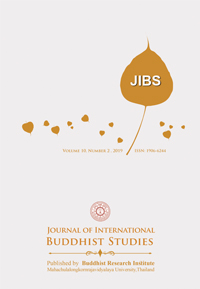City Rehabilitation with Community Participation on Cultural and Social Rejuvenation
Keywords:
Community Participation, Cultural Heritage, Social EcologyAbstract
This paper purposes to archive for translation of how Chiang Mai communities with in an urban aspect seeking methods to success their aims on community rehabilitation through heritage conservation. Overall representation comes from a development project by non-governmental alliance, named Fuen Baan YaanWieng Project which recruited varied partners from scholars, youth professionals and governor officers. The project focuses on promote the unique value of Chiang Mai old city and the community participation to conserve its heritage. The methodology of this project applied three steps of rehabilitation process 1) Identification of community’s unique value 2) a procedure on cultural and social rejuvenation based on community participation 3) How a center place or social system assemble a support for the program. The three steps are manifested as a core value to reveal questions and move forwards to implement and reach out community and alliance understanding. The result shows through the pilot projects based on community participation and community opinion which all excellent represent a good path way of community and city rehabilitation. Additionally, community has learned and experienced to rejuvenate their old social and cultural ecology; which gradually collapsed by urbanization. The communities have applied cultural and heritage assets as a tool along with collaboration and empowerment from varied agents who focused on cultural and heritage conservation as well. The new model of working with participatory approach has become a core concept which presently widespread over the old city and gradually started its impact in city level.
References
Arnstein, Sherry R. 1969. A Ladder of Citizen Participation. JAIP, Vol. 35, No. 4,July 1969.
Nampila, T. 2005. Assessing community participation–the Huidare informal settlement.University of Stellenbosch.
KorawannaSangkakorn, 2013 Local People Participation in Tourism Development: The Case Study of Chiang Mai.
Jamal, T. & Stronza, A., 2009, ‘Collaboration theory and tourism practice in protected areas: Stakeholders, structuring and sustainability’, Journal of Sustainable Tourism, vol. 17, no. 2.
Lacy, T. D., Battig, M., Moore, S., &Noakes, S. 2002. Public / Private Partnerships for Sustainable Tourism. In Delivering a sustainability strategy for tourism destinations: Asia Pacific Economic Cooperation Apec Tourism Working Group.
Nampila, T. 2005. Assessing community participation–the Huidare informal settlement.University of Stellenbosch.
Office of Natural Resource and Environmental Policy (ONRE). 2011. Knowledge and Understanding of Old City in
Thailand Vol. 1.
Samart Suwannarat and KorawannaSangkakorn, 2014, Community Based Tourism and Old City Revitalization: The case study of Chiang Mai City, Social Research Institute, Chiang Mai University.
UNESCO.2003.The 2003 Convention for the Safeguarding of the Intangible Cultural Heritage Available (online):http://www.unesco.org/culture/ich/index.php?lg =en&pg=00022#art2.
UNESCO.-. Tangible Cultural Heritage. http://www.unesco.org/ new/en/cairo/culture/tangible-cultural-heritage/
UNESCO. 2006. Discussion Report of the Planning Meeting for 2008 International Conference on Creative Tourism, Santa Fe, New Mexico, U.S.A.Available (online):unesdoc.unesco.org/images/0015/001598/
e.pdf.







